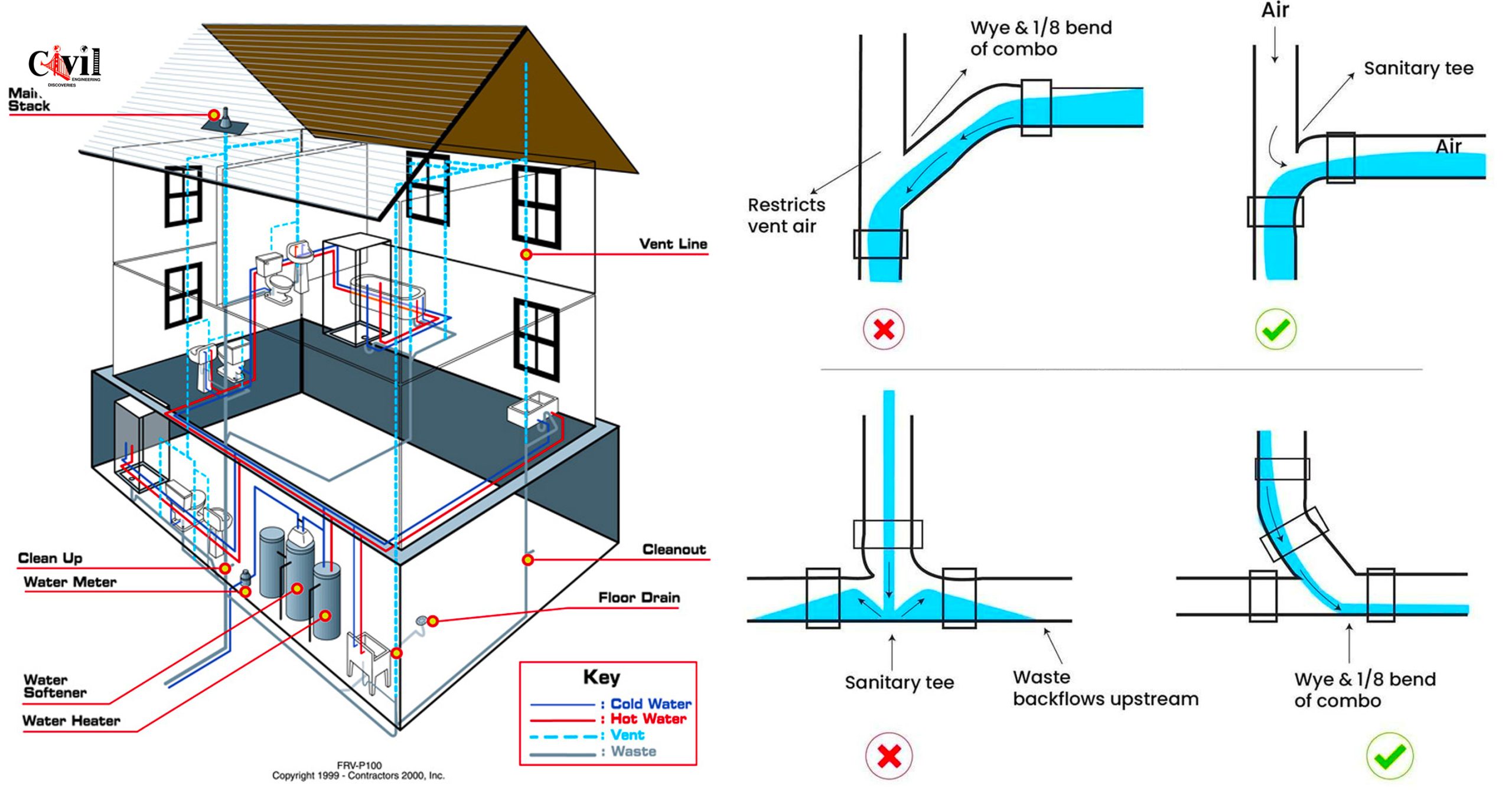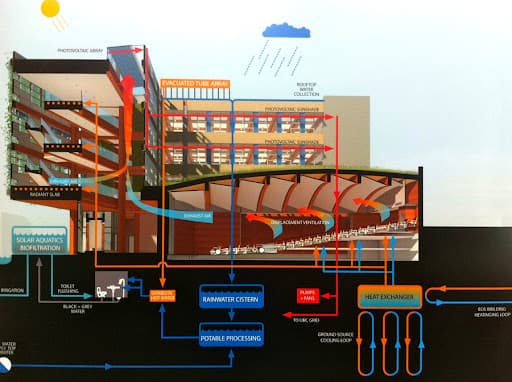Anatomy of Your Home's Plumbing System: Why It Matters
Anatomy of Your Home's Plumbing System: Why It Matters
Blog Article
We have found the article relating to The Inner Workings of Your Home's Plumbing below on the web and figured it made sense to quickly share it with you over here.

Recognizing just how your home's pipes system functions is crucial for each homeowner. From providing clean water for drinking, cooking, and showering to securely getting rid of wastewater, a well-kept plumbing system is critical for your family's wellness and convenience. In this thorough guide, we'll explore the elaborate network that makes up your home's pipes and deal tips on upkeep, upgrades, and taking care of usual concerns.
Introduction
Your home's pipes system is greater than just a network of pipes; it's a complicated system that ensures you have accessibility to tidy water and reliable wastewater elimination. Understanding its elements and exactly how they work together can help you stop pricey fixings and ensure every little thing runs efficiently.
Standard Elements of a Plumbing System
Pipelines and Tubes
At the heart of your plumbing system are the pipelines and tubing that carry water throughout your home. These can be constructed from different materials such as copper, PVC, or PEX, each with its advantages in regards to longevity and cost-effectiveness.
Components: Sinks, Toilets, Showers, and so on.
Fixtures like sinks, commodes, showers, and bath tubs are where water is utilized in your home. Comprehending how these components attach to the pipes system helps in detecting issues and planning upgrades.
Shutoffs and Shut-off Points
Valves manage the circulation of water in your pipes system. Shut-off shutoffs are vital throughout emergency situations or when you need to make repairs, permitting you to separate parts of the system without interrupting water flow to the entire residence.
Water System
Main Water Line
The major water line links your home to the community water or a personal well. It's where water enters your home and is dispersed to different components.
Water Meter and Pressure Regulator
The water meter procedures your water usage, while a pressure regulatory authority ensures that water streams at a secure stress throughout your home's plumbing system, stopping damage to pipelines and fixtures.
Cold Water vs. Warm water Lines
Understanding the distinction in between cold water lines, which provide water directly from the major, and warm water lines, which bring warmed water from the hot water heater, helps in troubleshooting and planning for upgrades.
Drain System
Drain Pipes Pipeline and Traps
Drain pipes carry wastewater far from sinks, showers, and bathrooms to the sewer or septic tank. Catches stop sewer gases from entering your home and also trap debris that might trigger blockages.
Air flow Pipes
Ventilation pipelines permit air right into the drainage system, stopping suction that might reduce drainage and create catches to empty. Proper ventilation is necessary for maintaining the honesty of your plumbing system.
Value of Correct Drainage
Making sure proper drain stops back-ups and water damages. Frequently cleansing drains pipes and preserving traps can protect against costly fixings and extend the life of your pipes system.
Water Heating System
Kinds Of Water Heaters
Water heaters can be tankless or traditional tank-style. Tankless heaters warm water as needed, while tanks keep warmed water for prompt use.
Exactly How Water Heaters Attach to the Plumbing System
Comprehending exactly how hot water heater attach to both the cold water supply and warm water circulation lines aids in detecting issues like insufficient hot water or leaks.
Maintenance Tips for Water Heaters
Consistently flushing your water heater to get rid of debris, examining the temperature level setups, and examining for leakages can expand its lifespan and enhance energy efficiency.
Typical Plumbing Concerns
Leakages and Their Reasons
Leakages can take place because of aging pipes, loose installations, or high water stress. Attending to leaks promptly protects against water damages and mold and mildew growth.
Blockages and Obstructions
Clogs in drains and commodes are typically triggered by purging non-flushable things or a build-up of oil and hair. Making use of drainpipe screens and bearing in mind what decreases your drains can stop clogs.
Indicators of Pipes Issues to Expect
Low tide pressure, slow-moving drains, foul odors, or uncommonly high water costs are signs of potential plumbing problems that ought to be resolved without delay.
Plumbing Maintenance Tips
Regular Inspections and Checks
Schedule yearly pipes evaluations to capture concerns early. Search for indicators of leaks, corrosion, or mineral buildup in faucets and showerheads.
DIY Upkeep Tasks
Basic tasks like cleansing faucet aerators, checking for commode leaks utilizing dye tablets, or protecting revealed pipes in chilly climates can protect against major plumbing problems.
When to Call a Professional Plumbing Professional
Know when a pipes problem needs professional experience. Trying complicated repair work without appropriate expertise can result in even more damage and higher fixing prices.
Upgrading Your Pipes System
Reasons for Upgrading
Updating to water-efficient fixtures or changing old pipes can boost water top quality, minimize water costs, and increase the worth of your home.
Modern Plumbing Technologies and Their Benefits
Discover innovations like smart leak detectors, water-saving toilets, and energy-efficient hot water heater that can save cash and lower environmental influence.
Expense Considerations and ROI
Compute the in advance expenses versus lasting savings when taking into consideration pipes upgrades. Several upgrades spend for themselves through reduced utility expenses and less repairs.
Ecological Effect and Conservation
Water-Saving Fixtures and Home Appliances
Mounting low-flow taps, showerheads, and bathrooms can significantly minimize water use without giving up performance.
Tips for Reducing Water Usage
Basic behaviors like dealing with leaks immediately, taking shorter showers, and running full tons of washing and recipes can conserve water and lower your energy expenses.
Eco-Friendly Pipes Options
Consider sustainable plumbing materials like bamboo for flooring, which is durable and environmentally friendly, or recycled glass for countertops.
Emergency Readiness
Steps to Take During a Pipes Emergency
Know where your shut-off shutoffs lie and exactly how to shut off the supply of water in case of a burst pipeline or significant leak.
Relevance of Having Emergency Calls Helpful
Keep call info for local plumbers or emergency situation services readily offered for quick reaction throughout a plumbing crisis.
Do It Yourself Emergency Fixes (When Relevant).
Momentary repairs like using air duct tape to patch a dripping pipe or positioning a container under a leaking tap can reduce damages up until a professional plumbing professional shows up.
Verdict.
Recognizing the anatomy of your home's pipes system equips you to keep it successfully, saving money and time on fixings. By following normal maintenance regimens and staying notified about modern plumbing modern technologies, you can ensure your plumbing system runs efficiently for years ahead.
HOW YOUR PLUMBING SYSTEM WORKS
Which Pipes Do What?
Blue lines = fresh water supply entering the building
Red lines = hot water supply entering the building
Grey lines = pipes carrying waste away from the building and venting pipes carrying gases away from the building (through the roof)
YOUR MAIN PLUMBING SYSTEMS
There are two main plumbing systems that support your home s basic plumbing needs one that brings clean water into your home, and one that sends dirty water away from your home. Connected to the toilet, bath, shower, and other faucets in your home, these two systems keep your water flowing in the right directions.
ACCESSING FRESH WATER
Fresh and clean water is brought into your home through the main water supply line . Filtered through one pipe, this water is pressured to flow into the various fixtures in your home at any given time.
This water can be sourced from a well located on your property, a pond or river (mostly cottages), or, as in most cases, from the city s municipal water treatment centre. However, it is important to note that water that is untreated, such as the water siphoned from ponds or rivers, may not be safe to drink. Personal water supplies always need to be treated for hardness and contaminants before consumed.
MUNICIPAL WATER SUPPLIES
Improve taste and odour
Remove sediment
Eliminate hardness
Reduce chlorine
COLD WATER SUPPLY VS. HOT WATER SUPPLY
Cold water flows into your home or building through the service line, which then distributes hot or cold water to your fixtures. This line is most commonly run through a central column that runs floor to floor. Hot water runs in short and straight pipes as the longer the pipeline, the more heat that will be lost in the transfer. Having shorter pipes also allows residents to access hot water more quickly.
WASTE WATER SYSTEM
Your wastewater system is divided into two parts pipes that send wastewater away from your home and venting pipes that send sewer gas away from your home. Sewage water travels through pipes that flush the water and waste towards local sewers that are operated and managed by your city or town. Most sewer systems rely on gravity to move the wastewater to where it needs to go.
The further away from your toilet or sink, the larger wastewater pipes become. This allows for waste to be disposed of from various parts of your home or business at once without pipe blockages. The angle and flow of these pipes are also essential for keeping your waste pipes clear of build up.
https://harrisplumbing.ca/how-your-home-plumbing-system-works/

HOW YOUR PLUMBING SYSTEM WORKS
Which Pipes Do What?
YOUR MAIN PLUMBING SYSTEMS
There are two main plumbing systems that support your home s basic plumbing needs one that brings clean water into your home, and one that sends dirty water away from your home. Connected to the toilet, bath, shower, and other faucets in your home, these two systems keep your water flowing in the right directions.
ACCESSING FRESH WATER
Fresh and clean water is brought into your home through the main water supply line . Filtered through one pipe, this water is pressured to flow into the various fixtures in your home at any given time.
This water can be sourced from a well located on your property, a pond or river (mostly cottages), or, as in most cases, from the city s municipal water treatment centre. However, it is important to note that water that is untreated, such as the water siphoned from ponds or rivers, may not be safe to drink. Personal water supplies always need to be treated for hardness and contaminants before consumed.
MUNICIPAL WATER SUPPLIES
COLD WATER SUPPLY VS. HOT WATER SUPPLY
Cold water flows into your home or building through the service line, which then distributes hot or cold water to your fixtures. This line is most commonly run through a central column that runs floor to floor. Hot water runs in short and straight pipes as the longer the pipeline, the more heat that will be lost in the transfer. Having shorter pipes also allows residents to access hot water more quickly.
WASTE WATER SYSTEM
Your wastewater system is divided into two parts pipes that send wastewater away from your home and venting pipes that send sewer gas away from your home. Sewage water travels through pipes that flush the water and waste towards local sewers that are operated and managed by your city or town. Most sewer systems rely on gravity to move the wastewater to where it needs to go.
The further away from your toilet or sink, the larger wastewater pipes become. This allows for waste to be disposed of from various parts of your home or business at once without pipe blockages. The angle and flow of these pipes are also essential for keeping your waste pipes clear of build up.
https://harrisplumbing.ca/how-your-home-plumbing-system-works/
We were shown that report about Plumbing Installation 101: All You Need to Know through an acquaintance on a different blog. Liked our blog posting? Please share it. Help other people find it. Thanks for your time. Don't forget to come by our blog back soon.
Click Here To Read More Report this page